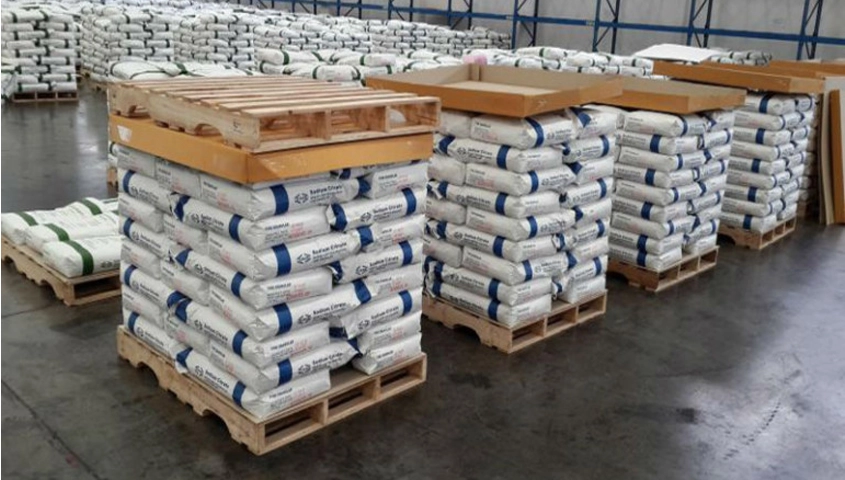Supplier of Citric Acid From Turkey and Dubai UAE

Citric Acid Overview
Citric Acid (C₆H₈O₇) is a weak organic acid naturally found in citrus fruits such as lemons, limes, and oranges. It appears as a white, crystalline, odorless powder with a distinctly sour taste. This acid plays a vital role both biologically and industrially, serving as a natural preservative, acidulant, and chelating agent.
Citric acid is classified as a tricarboxylic acid, containing three carboxyl (–COOH) groups and one hydroxyl (–OH) group, which contribute to its acidity and strong binding capacity with metals. Due to its safety, biodegradability, and multi-functional properties, it is one of the most widely used organic acids in food, pharmaceutical, and industrial formulations.
Physical and Chemical Properties of Citric Acid
Citric acid has a molecular formula of C₆H₈O₇ and a molecular weight of 192.13 g/mol (anhydrous) or 210.14 g/mol (monohydrate). It is highly soluble in water (1460 g/L at 20°C) and decomposes upon heating to around 153°C. A 1% aqueous solution of citric acid has a pH of about 2.2, demonstrating its moderately strong acidic nature.
Its excellent solubility, non-toxic profile, and ability to bind metal ions make citric acid a preferred compound for diverse applications — from food preservation and cleaning formulations to pharmaceutical stabilization and metal treatment.
Applications and Uses of Citric Acid
1. Food and Beverage Industry
Citric acid is one of the most common additives in food processing. It enhances flavor, extends shelf life, and maintains product stability.
-
Flavor Enhancer: Adds a tangy, refreshing taste to soft drinks, candies, and frozen desserts.
-
pH Regulator: Balances acidity and stabilizes color and texture in sauces, jams, and beverages.
-
Preservative: Prevents the growth of microorganisms in canned goods and processed foods.
-
Emulsifier: Helps maintain uniformity in dairy and beverage products by preventing fat separation.
2. Pharmaceutical Industry
In pharmaceuticals, citric acid serves both as a chemical reagent and a functional additive.
-
Buffering Agent: Maintains the pH of medicines, syrups, and injections.
-
Effervescent Agent: Reacts with bicarbonates in effervescent tablets to promote quick dissolution.
-
Anticoagulant: Used in blood collection bags and laboratory reagents to prevent clotting.
3. Cosmetics and Personal Care
Citric acid is a key ingredient in cosmetic and skincare formulations.
-
pH Adjuster: Ensures ideal pH balance for creams, shampoos, and lotions.
-
Exfoliating Agent: Acts as a mild AHA (Alpha Hydroxy Acid) to improve skin texture and brightness.
-
Antioxidant: Protects products from oxidation and extends shelf life.
4. Cleaning and Household Products
Due to its non-toxic and eco-friendly nature, citric acid is used in green cleaning products.
-
Descaling Agent: Removes limescale, rust, and mineral deposits from surfaces and appliances.
-
Stain Remover: Effective for removing grease, soap scum, and hard-water stains.
-
Disinfectant: Provides natural antibacterial and antifungal action in household cleaners.
5. Industrial Applications
Citric acid has numerous technical applications due to its chelating and buffering properties.
-
Water Treatment: Removes metal ions and prevents scaling in water systems.
-
Metal Cleaning and Polishing: Used to clean, polish, and protect metal surfaces from corrosion.
-
Textile and Leather Industries: Functions as a dyeing aid and pH regulator in fabric processing.
Handling, Storage, and Transportation of Citric Acid
Citric acid should be handled with care to prevent irritation from prolonged exposure. Avoid inhaling dust and use protective gloves and eyewear during handling.
-
Storage: Keep in a cool, dry, and well-ventilated area away from moisture and direct sunlight.
-
Containers: Store in tightly sealed polyethylene or fiber drums to prevent contamination.
-
Transportation: Citric acid is classified as a non-hazardous material and can be safely transported by road, sea, or air under standard conditions.
Packing Details of Citric Acid
Citric acid is available in multiple packaging options depending on the application and customer requirements.
-
25 kg PP woven bags with inner liner
-
25 kg kraft paper bags
-
500 kg and 1000 kg jumbo bags (FIBCs)
Container Loading
-
20’ FCL: 20–22 metric tons
-
40’ FCL: 25–27 metric tons (depending on packaging type)
All packaging is moisture-proof and complies with international export standards to ensure product stability during long-distance shipping.

